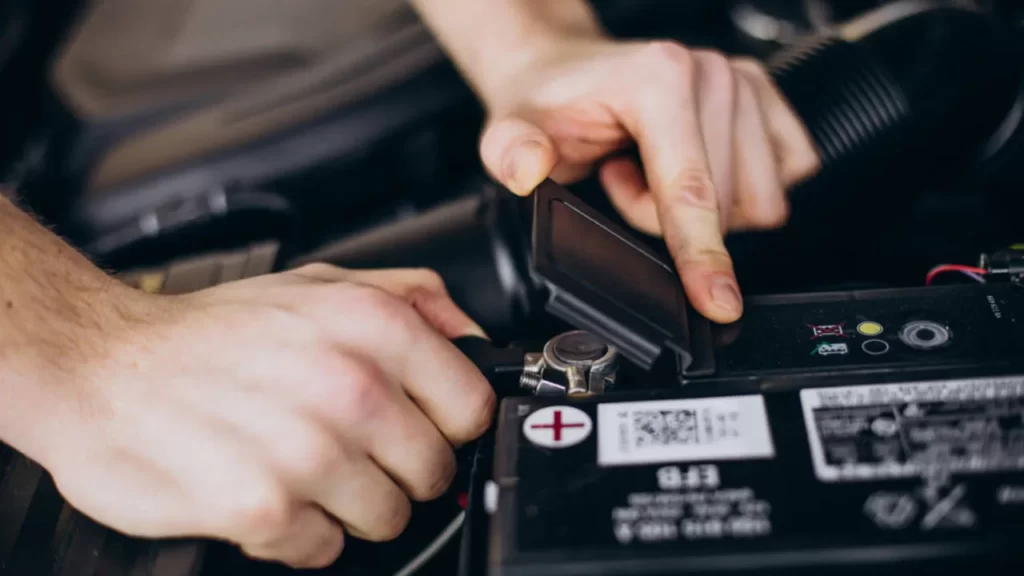Car batteries are more than just a power source. They are engineered systems designed to deliver reliable cranking power and steady electricity to all onboard electronics. Picking the wrong size or spec can cause poor starting, electrical issues, or premature failure. This guide simplifies everything you need to know.

AI Quick Summary
API error: models/gemini-1.5-pro-latest is not found for API version v1beta, or is not supported for generateContent. Call ListModels to see the list of available models and their supported methods.
This summary was generated by AI using this article’s content.
Read Next
What Are The Basics Of A Car Battery?
A typical car battery is a 12-volt lead-acid unit made of six cells connected in series. Each cell produces around 2.1 V, giving a full charge of 12.6 V.
They serve two main jobs:
- Cranking Power (CCA): High current to start the engine.
- Reservoir Capacity (RC): Running accessories when the engine is off.
Why Are Battery Group Sizes Important?
Group sizes define dimensions, terminals, and mounting style, ensuring the battery fits securely in your car.
Common Group Sizes:
| Group Size | L (mm) | W (mm) | H (mm) | Typical Use |
| 24 | 242 | 175 | 190 | Compact sedans, small SUVs |
| 34 | 260 | 173 | 225 | Mid-size sedans, crossovers |
| 35 | 242 | 175 | 200 | Compact to mid-size cars |
| 48 (H6) | 276 | 175 | 190 | Luxury sedans, performance cars |
| 49 (H8) | 312 | 175 | 190 | Large SUVs, trucks |
| 65 (H7) | 260 | 175 | 225 | European and premium cars |
What Are The Key Battery Specifications To Check?
When comparing, pay attention to these critical numbers:
- Voltage (V): Standard cars = 12 V.
- Cold Cranking Amps (CCA): Current a battery delivers at –18°C for 30 seconds while holding at least 7.2 V. Higher CCA = easier cold starts.
- Reserve Capacity (RC): Minutes a battery can supply 25 A before dropping below 10.5 V. Higher RC = better backup power.
- Amp-Hour (Ah): Indicates stored charge, more important for EVs and deep-cycle needs.
- Terminal Type & Position: Must match your car’s cable layout (top-post, side-post, etc.).
How Do You Match The Right Battery To Your Car?

Choosing the right battery involves more than just size.
- Check Manufacturer Specs: Owner’s manual lists approved group size, CCA, and terminals.
- Consider Climate:
- Cold climates → higher CCA.
- Hot climates (like UAE) → heat-resistant designs with strong RC.
- Accessory Load: Cars with big infotainment systems, start-stop tech, or aftermarket upgrades benefit from AGM batteries.
- Physical Fitment: Ensure correct tray dimensions and hold-down compatibility.
What Types Of Car Batteries Exist?
| Type | Advantages | Considerations |
| Flooded Lead-Acid | Affordable, widely available | Needs upkeep, risk of spillage |
| Sealed Maintenance-Free | No topping up, less corrosion | Slightly costlier |
| AGM | Vibration-proof, supports deep cycling | Expensive, heavier |
| EFB | Designed for start-stop, good durability | Mid-priced |
| Lithium-Ion | Lightweight, long cycle life, used in EVs | Very costly, needs special charging |
How Can You Maintain A Car Battery?
Keep your battery healthy with simple checks:
- Clean corrosion from terminals (baking soda + water works).
- Tighten connections securely, but don’t overtighten.
- Measure resting voltage with a multimeter (12.6 V = healthy, below 12.4 V = recharge/replace).
- Secure it firmly to avoid vibration damage.
- Watch for built-in hydrometers or indicators showing state of charge.
When Should You Replace A Car Battery?
Most car batteries last 3–5 years.
Warning signs:
- Slow cranking on start-up.
- Dim headlights.
- Dashboard battery light.
- Frequent jump-starts.
How Should You Dispose Of An Old Car Battery?
Never throw old batteries in the bin. They contain lead and acid, both toxic. Return them to recycling centres or retailers for safe handling.
The right battery is about fit, performance, and longevity. By matching group size, CCA, and technology to your car and climate, you ensure reliable starts and steady performance. Proper maintenance and safe recycling will extend life and protect the environment.
FAQs
What does a battery’s “group size” mean?
It’s a standard classification (by BCI and others) defining a battery’s physical dimensions, terminal layout, and hold-down configuration for correct vehicle fit.
How do I know what battery size fits my car?
Check your owner’s manual or the original battery’s label for recommended group size. You can also use a battery-size lookup tool or consult a parts retailer.
What is Cold Cranking Amps (CCA)?
CCA is the current a battery can deliver at –18 °C for 30 seconds while maintaining at least 7.2 V. It measures starting power under cold conditions.
Can I use a different battery size if CCA and RC are correct?
Possibly, but only if physical dimensions, terminal positions, and mounting still suit your car. Mismatches may lead to poor fit or electrical problems.
When should I replace my car battery?
Typically, after 3 – 5 years. Replace it sooner if you notice slow cranking, dim lights, frequent need for jump starts, or the battery indicator shows low charge.
Car batteries are more than just a power source. They are engineered systems designed to deliver reliable cranking power and steady electricity to all onboard electronics. Picking the wrong size or spec can cause poor starting, electrical issues, or premature





